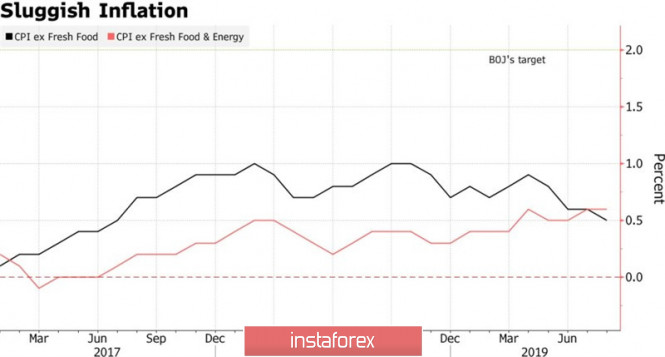The economic calendar of the last full week of September can hardly be called saturated, so investors will be focused on events of a geopolitical nature. The trade war, the conflict in the Middle East and Brexit are forcing investors to pay attention to safe haven assets, all the more so since the yen, which has become pretty cheaper in the first half of the month, is starting to look like a tidbit.
Over the past 3 weeks, USD/JPY quotes have grown by 4% amid closing short positions. De-escalation of the US-China trade conflict, lower Fed rates, revival of the European QE, a decrease in the probability of disorderly Brexit and strong macro statistics across the United States convinced investors that not everything was as bad as is commonly believed. Is it time to reduce the share of safe haven assets in portfolios? As a result, the yield on US treasury bonds began to grow, and the yen, franc and gold were in a black body. As subsequent events showed, not for long.
The attacks on Saudi Arabia, the statement by Donald Trump that he did not need a temporary deal with China on the eve of the presidential election, as well as the refusal of the Chinese delegation to visit American farmers, were seen as a signal of worsening global risk appetite and relations between Washington and Beijing. Riyadh claims that the terrorist attack was certainly funded by Tehran, and Donald Trump sends troops to the Allied camps in the Middle East and imposes sanctions against the Iranian central bank. How not to buy bonds and other safe havens in such conditions?
A deterioration in global risk appetite and a return to interest in the yen are making life difficult for the Bank of Japan. We watched the USD/JPY correction, realizing that devaluation would help accelerate inflation. Consumer prices in Japan slowed to 0.5% y/y in August, which is the worst trend since 2017.
The dynamics of Japanese inflation

Slowing inflation theoretically unties the hands of the central bank in easing monetary policy, but everything looks different in real life. Haruhiko Kuroda is confronted by the Fed's inability to weaken the US dollar even by lowering federal funds rates and EUR/USD growth in response to the revival of the ECB's quantitative easing program. It is obvious that a further drop in the overnight rate (-0.1%) in the red zone will only aggravate the problems of Japanese banks. In the current situation it is better to sit and see how events will develop. Perhaps negotiations between Washington and Beijing will result in a breakthrough and increase in global risk appetite ... On the contrary, the resumption of the rally in the oil market poses a threat to countries importing black gold and strengthens the demand for safe-haven assets.
Technically, the bulls' inability to hold USD/JPY quotes above the upper limit of the downward trading channel is the first sign of their weakness. After reaching an intermediate target of 78.6% according to the Shark pattern, a logical pullback followed, which risks continuing in the direction of 106.9 and 106.25. The main task of the bears is to keep the pair below 107.5.
The material has been provided by InstaForex Company - www.instaforex.com